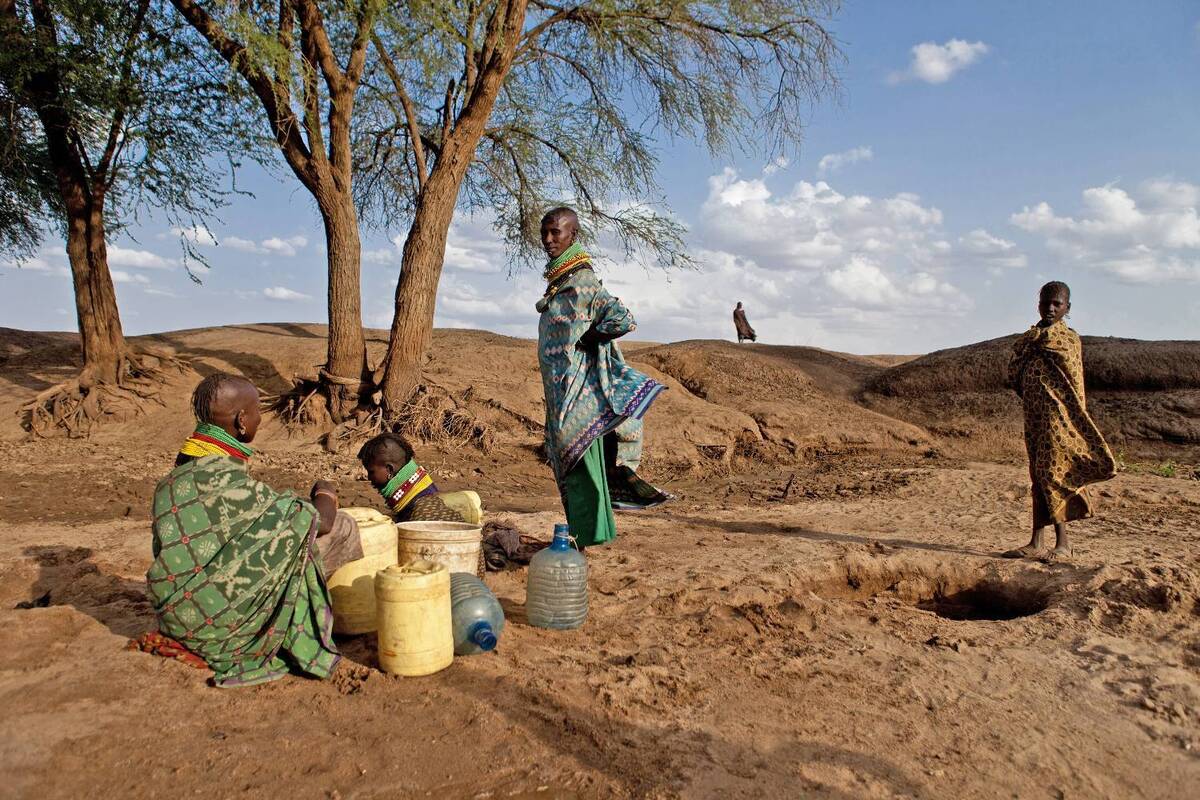Flash Droughts Growing Increasingly Common

Fast-forming droughts are occurring more often and with greater speed in many parts of the world due to climate change, a new study finds. These “flash droughts” are replacing more typical, slower ones and are harder to predict and prepare for, which could make their management more difficult, the journal Science reported.
Most major droughts have tended to occur over seasonal or yearly time scales, resulting from variability in large-scale climate patterns such as El Niño (SN: 2/13/23). But in roughly the last six decades, there has been a transition toward more droughts that form over just a few weeks with little warning in most of the world.
“This finding has massive implications for ecosystem conservation and agricultural management,” says Christine O’Connell, an ecosystem ecologist at Macalester College in St. Paul, Minn., who was not involved in the study. “Will some species of plants be less able to survive a trend towards flash droughts? What would that mean for biodiversity or the amount of carbon stored in an ecosystem?”
Some flash droughts develop into seasonal ones, yet even those that do not can cause significant damage to agriculture and contribute to other extreme weather events such as wildfires and heat waves. In the summer of 2012, a severe flash drought across the United States caused over $30 billion in damages. Many affected areas transformed from normal conditions to extreme drought within a month, and no climate models predicted it.
Previous research has suggested that flash droughts are on the rise in some areas. But it was unclear whether they were replacing slower-onset droughts, meaning the usually slow droughts were coming on faster, or if both fast- and slow-onset droughts were increasing in tandem.
To find out, Xing Yuan, a hydrologist at Nanjing University of Information Science and Technology in China, and colleagues analysed soil moisture data from around the world from 1951 to 2014. They distinguished between flash and slow subseasonal droughts by exploring the rate at which soils dried during the initial period of drought onset, then calculated how often each occurred and the geographic spread.
The speed of drought onset on subseasonal scales has increased in much of the world, the team found. And the ratio of fast to slow droughts has increased in over 74 percent of global regions set out by the Intergovernmental Panel on Climate Change Special Report on Extreme Events. Certain regions such as South Australia, North and East Asia, the Sahara, Europe and the western coast of South America were most affected.
By comparing climate models that included or omitted factors like greenhouse gases, the researchers found that human-induced climate change is a major influence on the global trends. These patterns intensify under higher-emission scenarios, and the onset speed for droughts also increases.
The climate anomalies, such as heat waves, driving these flash droughts are more extreme than those that drive seasonal or interannual droughts, which leads to severe droughts in a shorter time, Yuan says.
As with most droughts, a period of low rainfall is still the main driver of flash droughts. But excessive evapotranspiration — water moving into the atmosphere from soil and plants — plays a key role in these droughts’ emergence by drying out soils quickly, the analysis shows. Flash droughts happen two to three times as often in humid regions such as northwest North America, Europe and southern China as elsewhere, the study found.
As the world continues to warm, causing more evapotranspiration and less rainfall, flash drought frequency is expected to continue to rise, the researchers say.
The study is “very important as we are living in it now,” says Mark Svoboda, a climatologist at the University of Nebraska–Lincoln who first coined the term “flash droughts” 20 years ago but wasn’t involved in the new research. “We now have more data to confirm my hunch that the interplay of drought with winds, evapotranspiration and heat waves in particular could really lead to rapid onset drought.”
Predicting flash droughts is challenging as current monitoring systems often cannot capture their onset at short enough time scales. “We have to improve these systems,” Yuan says, by exploring the mechanisms behind flash droughts and improving simulations, perhaps with the help of artificial intelligence.
Dealing with these droughts isn’t just about having a better tool set, Svoboda says, but also a different mind-set. “It is human nature not to deal with drought until you’re in it. Instead, we advocate that drought be dealt with proactively instead of reactively.”
4155/v






















